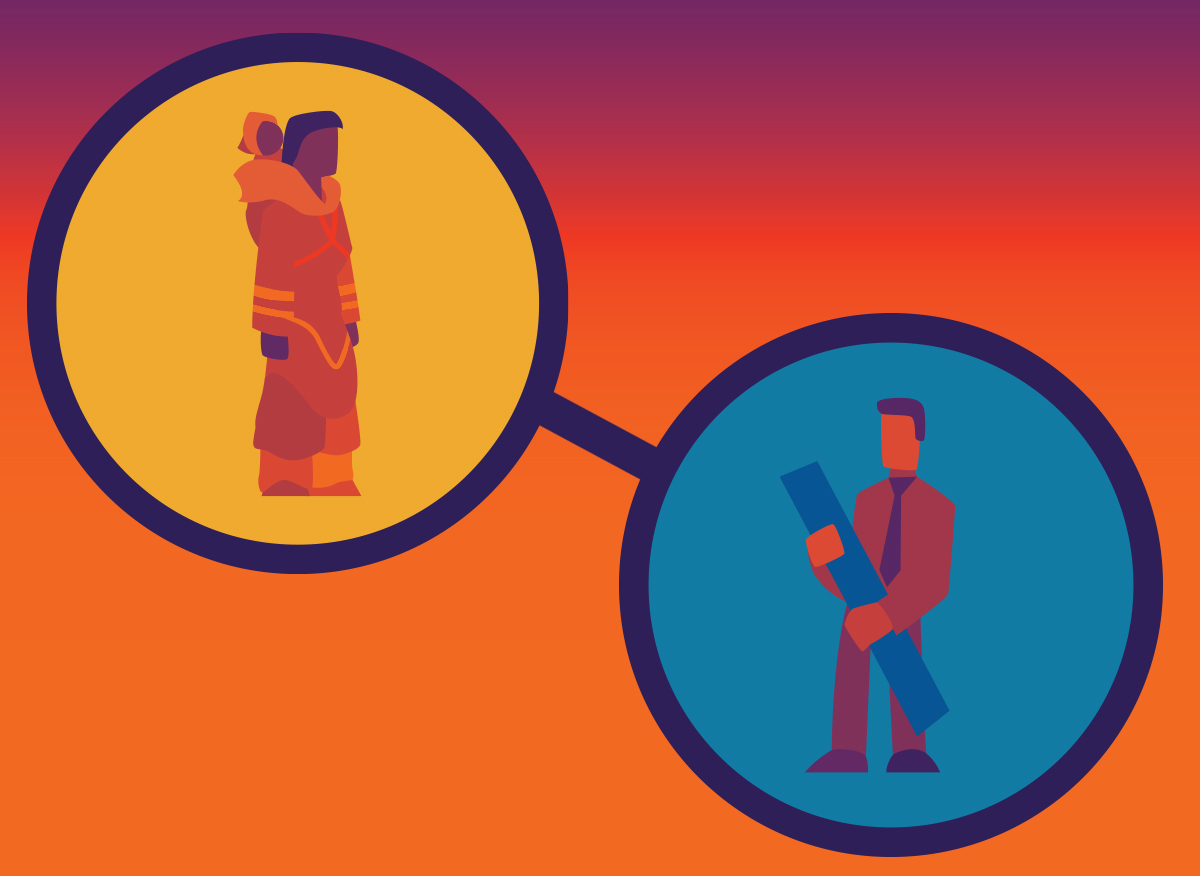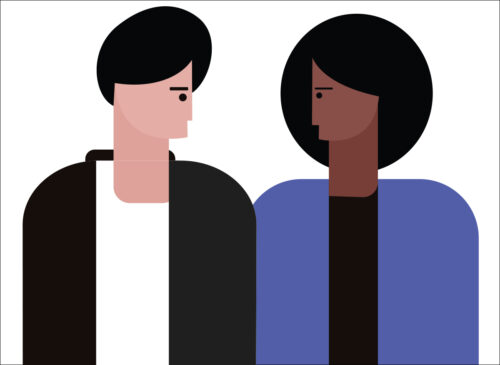After four years, reconciliation is not what we hoped it would be in our classrooms. How did we get here, and is there any way to fix what is broken?

Reconciliation in academia is dead
In fact, reconciliation as a national project may have been dead on arrival after the Canadian Truth and Reconciliation Commission (TRC) released its final report in 2015. Failed attempts of reconciliation in Canadian politics can be seen in the ever-present discordance in the Inquiry into Missing and Murdered Indigenous Women and Girls, the increasing number of boil-water advisories on First Nations communities that are not being fixed, the disproportionate number of Indigenous peoples in the justice system, and the disproportionate number of Indigenous youth in the child welfare system.
Higher education institutions have continued to try and foster good relationships with Indigenous people in university settings. However, many postsecondary initiatives ring hollow with Indigenous faculty members and students.
Several examples in Ontario showcase this. In 2018, Angelique EagleWoman—the first Indigenous dean of law at Lakehead University—resigned from her position citing systematic racism and tokenization, despite the university administration’s commitment to Aboriginal and Indigenous law. Reports of similar occurrences within universities across Canada further illustrate a disturbing trend.
In 2018, Doug Ford scrapped a program that would have increased Indigenous content in the provincial elementary and high school curriculum. Misinformation about Indigenous peoples still runs rampant in our classrooms and Indigenous students are often gaslighted by professors for speaking out, making these students question their own knowledge of their people.
If reconciliation was a fad shaped by political discourse, 2018 may have been the year the fad ended.
If reconciliation was a fad shaped by political discourse, 2018 may have been the year the fad ended.
As an Anishinaabe scholar watching any hope of proper reconciliation dwindle over the course of four years, I have to ask the following questions: How did we get here? What do we do now? And is there any way to fix what is broken?
How did we get here?
Reconciliation did not start with the release of the TRC’s Final Report. It originated in Canadian political discourse following the 1990 standoff in Kanesatake, Quebec, known to many Canadians as the Oka Crisis. In the aftermath of the 78-day conflict that left a Quebec provincial police officer dead and a community with few coping mechanisms to address the impacts of militarized state violence, the Royal Commission on Aboriginal Peoples (RCAP) was established.
RCAP was first formed in 1991 to address the strained relationship between Canadians and Indigenous nations. After five years, the Commission released its report featuring the word “reconciliation” in various contexts throughout its five volumes. This included a promised Royal Proclamation on Reconciliation, which has yet to materialize.
In response to RCAP, Canada published Gathering Strength: Canada’s Aboriginal Action Plan in 1998. The document recognized and apologized to “those who experienced physical and sexual abuse at Indian residential schools,” and acknowledged the Canadian state’s role in the development and administration of these schools. Gathering Strength also unveiled a long-term broad-based policy approach to reconciliation. This became the catalyst for the 2006 Indian Residential School Settlement Agreement—a $2 billion compensation package for residential school survivors and the creation of the TRC.
Canada did not suddenly jump into action to fix the problems it created through the residential school system. Even though RCAP made recommendations for a public inquiry, it took the continued persistence of survivors to create the Indian Residential School Settlement Agreement and the TRC. Canada only agreed to these because its bureaucracy grew financially exhausted from fighting battles in court. Despite Canada’s refusal to implement change, the TRC was finalized in May 2006 through the hard work and persistence of residential school survivors.
On June 11, 2008, 10 days after the launch of the TRC, then Prime Minister Stephen Harper made a public apology to survivors. The apology and the Commission were mandated outcomes of the Indian Residential School Settlement Agreement. Reconciliation seemed to create a model for “forgiveness” that would bring Indigenous peoples back into the fold with the rest of Canada. This was the government’s commitment to reconciliation. Then on December 15, 2015, with the release of the TRC’s Final Report, Justin Trudeau, who has since become Prime Minister, tearfully stated Canada’s commitment to implementing every Call to Action made by the Commission.
Since then, the term “reconciliation” is used almost every time Indigenous peoples are brought up in conversation. Justice Murray Sinclair, the chair to the TRC, stated in 2015 that reconciliation was a Canadian problem, not an Aboriginal one. Yet, the emergence of reconciliation as another empty buzzword creates problems for Indigenous peoples. Historian Ian Mosby revealed in 2017 that only 7 of the 94 Calls to Action were implemented over two years, and as of March 2019, only 10 of the 94 calls have been completed, according to the CBC.
What now?
If reconciliation is not what we hoped it would be, then what does it really mean?
Métis professor David Garneau makes the link between reconciliation and Judeo-Christianity in his article Imaginary Spaces of Conciliation and Reconciliation. Garneau states that reconciliation refers to a previously harmonious relationship between the individual and the church, or between the individual and God. In the context of Indigenous-Canadian relations, this concept of reconciliation lends itself to question whether there was ever a previous harmonious relationship between Indigenous nations and the Canadian state to which we can return.
For me, the answer is invariably “no.” Given that the first Prime Minister of Canada, John A. MacDonald, was eager to strip Indians of their title to land and force Indigenous children into residential schools, I would be hard pressed to find a harmonious relationship that ever existed prior to the (illegal) establishment of the Canadian state.
Duncan Campbell Scott, Deputy Superintendent General of Indian Affairs from 1913-32, drove MacDonald’s assimilation policies even more aggressively. Scott has been most famously quoted for wanting to “get rid of the Indian problem” by ensuring the assimilation of Indigenous people into the Canadian body politic until there was no “Indian question, and no Indian department.”
There was no previous harmonious relationship.
So, what does that mean for reconciliation? I think we, as academics, need to shift our thinking from reconciliation to conciliation, or simply finding a resolution to the conflicts between Indigenous peoples and the Canadian state. The question is not about forgiveness, moving on, or any term we currently associate with reconciliation. This includes Indigenization or decolonization of academia, which I will discuss further.
Instead, we need to frame our discussions and research around the conciliation of poor Indigenous-Canadian relations—whether they have manifested as standoffs, courtroom battles, or uneven dynamics in the classroom.
Yet the question remains: How?
Decolonization is not a metaphor
Many times when we speak of reconciliation, we speak of the Indigenization or decolonization of our classrooms. Indigenization and decolonization are often used interchangeably, and multiple definitions have emerged as scholars have grappled with solutions to problems we observe in our fields. For instance, one definition of Indigenization proposed by Matthew Stranach in an article published by The Conversation is “the process by which Indigenous ways of knowing, being, doing and relating are incorporated into educational, organizational, cultural and social structures.”
Moira MacDonald has outlined the many ways that campus Indigenization can take place, whether it is through the establishment of Indigenous spaces and symbols, increased academic programs and resources, or through the creation of research chairs and projects. These initiatives seem to place emphasis on the incorporation of Indigenous ways of knowing, being, doing, and relating in academic spaces.
However, Tuck and Yang remind us that decolonization is a not a metaphor for improving our schools or society. In fact, decolonization is the “re[mat]riation of Indigenous land and lives.” If we wish to advance conciliation between Indigenous peoples and the Canadian state, we must take seriously the idea of true decolonization.
If we wish to advance conciliation between Indigenous peoples and the Canadian state, we must take seriously the idea of true decolonization.
In 2016, the Infrastructure Resiliency Research Group (IRRG) at Carleton University was caught holding a symposium that brought together energy corporations and law enforcement agencies to ask how to deal with protestors. The topic was framed as a matter of “security.” In Policing Indigenous Movements: Dissent and the Security State, Andy Crosby and Jeff Monaghan have made the link between extractive industries and surveillance of Indigenous land defenders by Canadian security agencies.
Knowing that Indigenous people are at the forefront of these protests, a group of student organizers shut down IRRG’s event. I was a part of this group and held meetings with faculty members associated with the IRRG in an effort to explain why IRRG’s symposium was so problematic and to identify a common way forward. After a series of denials and broken promises, it was clear no viable resolution could be reached. IRRG still exists today.
Later in 2019, while participating in a newly established committee to update Carleton’s Indigenous Strategy, it was revealed that the university pension plan includes investments in oil and energy corporations. The January 2019 invasion of Wet’suwet’en territories by the RCMP to enforce an injunction that allowed Costal GasLink Pipeline Ltd (a subsidiary company of TransCanada) to begin work on a pipeline, demonstrates the disregard for Indigenous peoples’ lands and lives held by many of these oil and energy companies.
We cannot speak of conciliation in academia while university administrators, faculty, and staff are complicit in violations of Indigenous rights and sovereignty. Until privileged members of the academy take seriously the rematriation of Indigenous land and lives as the only path to conciliation and focus their work on this topic, any attempt to Indigenize or decolonize academia will only wind up as a dead-end, much like the concept of reconciliation.










